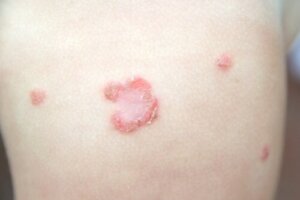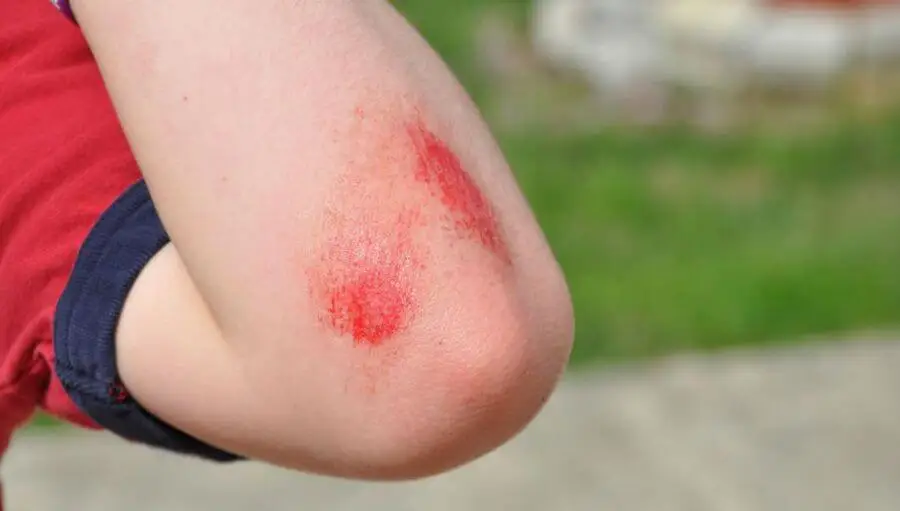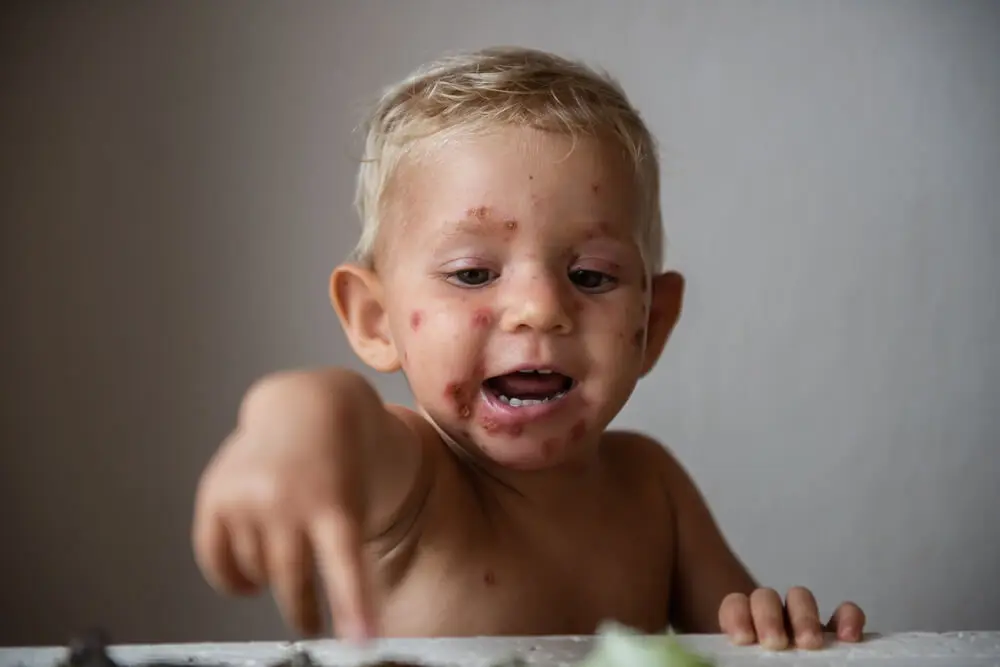Impetigo in Children


Written and verified by the dermatologist Maria del Carmen Hernandez
Impetigo in children is caused by a bacterium that creates a skin infection. In general, it usually appears around the mouth, nose, and ears. The main route of contagion is direct contact with the lesion.
It has a higher incidence between 2 and 6 years of age, because these children suffer more scrapes and cuts and also scratch more; this leads to the spread of the bacteria.
It can occur at any time of the year, although it’s seen more frequently in the warm months due to temperature and humidity conditions.
How does impetigo appear on the skin?
Impetigo appears on the skin as sores covered with honey-colored crusts. They aren’t usually accompanied by fever and patients remain generally well. The sores usually heal normally after a period of time, without scarring.
As a superficial skin infection, it can cause itching, burning, and even pain if located in the perioral area. It sometimes occurs with lymph nodules close to the area of infection. These nodules are mobile and can cause pain.

The causes of impetigo in children
In about 90% of cases, impetigo is caused by Staphylococcus aureus, while, in the rest, Streptococcus pyogenes is the cause. Streptococcus is also the cause of streptococcal pharyngitis, for example.
The vast majority of us carry both bacteria on our skin. However, in the face of any wounds, bites, scrapes, or cuts, the bacteria are capable of causing an infection, resulting in impetigo.
Types of impetigo
There are two main types of impetigo:
- Non-blistering impetigo. This is largely caused by streptococcus. It erodes the skin surface after small wounds or trauma and causes larger ulcers that will later be covered by a myelic crust. Several lesions can usually be observed in the same child, as a result of autoinoculation. It isn’t related to blisters.
- Bullous impetigo. This is caused by staphylococcus. It causes blisters and vesicles filled with clear fluid on the skin. They break easily and cause an area of exposed, shiny dermis that will crust over with a yellowish crust.
Read also: Should You Pop Blisters?
Diagnosis

In the physical examination during the medical consultation, the specialist makes the diagnosis based on the characteristics of the rash and the anamnesis. The pediatrician may believe it necessary to request a laboratory culture to determine which bacteria is causing the condition.
There are several dermatological diseases that lead to a difficult differential diagnosis:
- Bullous pemphigoid
- Herpes simplex virus infection
- Scabies
- Allergic reaction to a bite
- Dermatophytosis
This is why we emphasize the need for consultation with a qualified physician. This, by means of their medical history and physical examination, will proceed to the correct differential diagnosis. However, the definitive diagnosis is provided by the microbiological culture of the exudate of the lesions.
You may be interested in: Treatment for Cold Sores
Appropriate treatment of impetigo in children
The aim is to eliminate the infection, and, the recommended treatment is antibiotics. These can be applied topically or orally, depending on the extent of the lesions on the body surface or if it’s accompanied by systemic symptoms.
The use of emollient creams helps to maintain the skin barrier function. Symptomatic adjuvant treatment can be covered with antihistamines for itching or anti-inflammatories if necessary. It’s important to apply sun protection to avoid hyperpigmented areas on the lesioned skin.
Impetigo in children is contagious until the lesions are completely gone. However, care should be taken.
How to prevent and control the spread
Some of the recommendations for preventing the spread of impetigo in children are as follows:
- Keep children’s nails short and clean.
- Teach them not to scratch skin lesions, as this allows the bacteria to thrive.
- In case of touching the lesions, wash the exposed area with soap and water.
- Avoid contact with other children during this time.
- In the case of scratches, clean them with soap and water and apply antibiotic cream.
- Don’t share dirty clothes, sheets, or towels with someone with an active skin infection.
- Maintain proper skin moisturization to activate the skin barrier.
Impetigo in children is common but must be controlled
Even if we consider impetigo in children to be only a localized skin infection, treatment should be instituted quickly because of its high contagiousness.
See a doctor if symptoms persist or if there’s suspicion that the infection has worsened, such as pain, fever, or increased swelling.
All cited sources were thoroughly reviewed by our team to ensure their quality, reliability, currency, and validity. The bibliography of this article was considered reliable and of academic or scientific accuracy.
- García-Romero, M. T. (2017). Impétigo ampolloso. Acta pediátrica de México, 38(5), 351-354.
- Moyano, M., Peuchot, A., Giachetti, A. C., Moreno, R., Cancellara, A., Falaschi, A., & Roldán, D. (2014). Infecciones de piel y partes blandas en pediatría: consenso sobre diagnóstico y tratamiento. Arch Argent Pediatr, 112(2), 183-191.
- Sellarés Casas, E., & FA, M. L. (2007). Infecciones cutáneas bacterianas. Protocolos diagnósticos y terapéuticos en dermatología pediátrica, 1, 29-35.
This text is provided for informational purposes only and does not replace consultation with a professional. If in doubt, consult your specialist.








